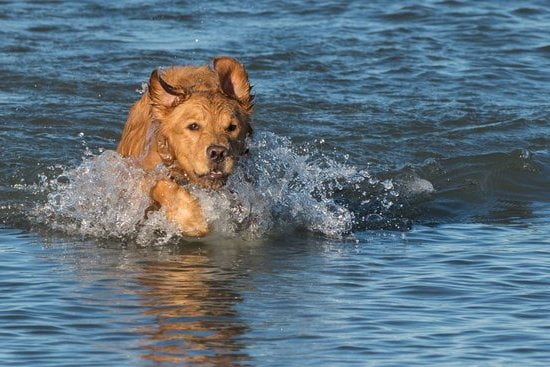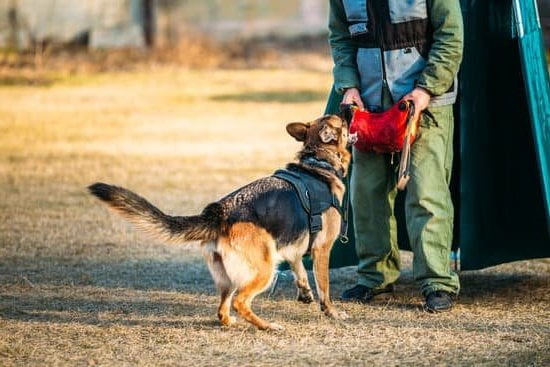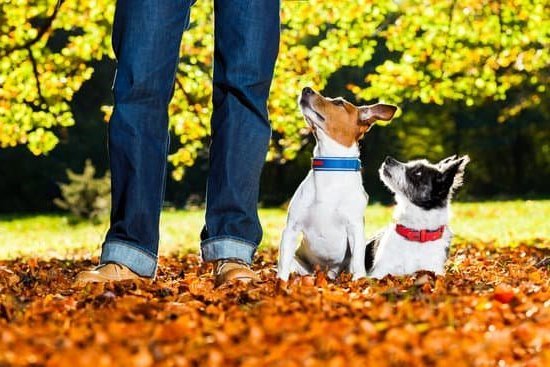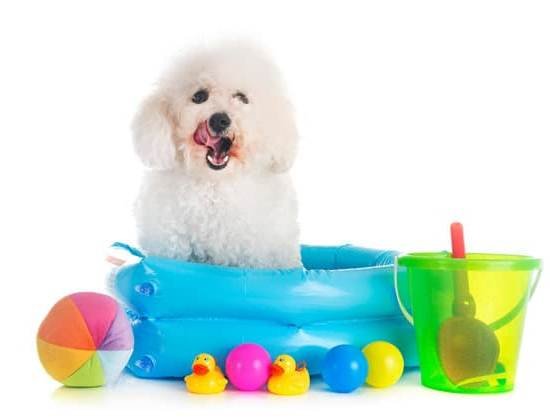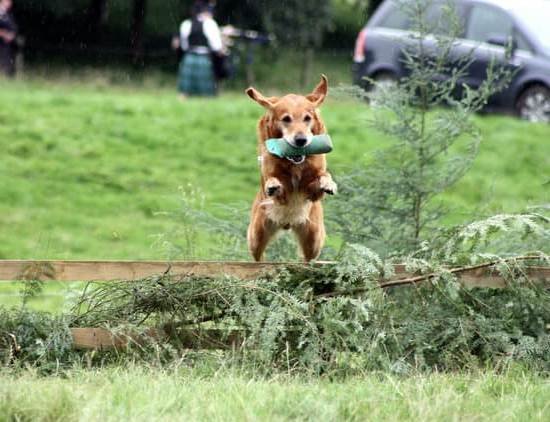House training a mature dog can present unique challenges compared to training a young puppy. While puppies are typically a blank slate when it comes to house training, mature dogs may have developed bad habits or ingrained behaviors that make the process more difficult. In this article, we will explore the specific challenges of house training a mature dog and provide you with effective strategies for success.
One of the main hurdles in house training a mature dog is understanding why they may struggle with this process. Unlike puppies who are still learning about boundaries and control over their bodily functions, older dogs may have had previous experiences or lack of proper training that makes it harder for them to grasp the concept of house training.
Additionally, medical conditions or cognitive decline can contribute to accidents in older dogs. Understanding these potential factors will help you approach the training process with patience and empathy.
To set yourself and your mature dog up for success in house training, it is important to prepare with the right supplies and equipment. This includes items such as crates or confinement areas, cleaning products specifically designed for pet messes, and treats or rewards for positive reinforcement. Having these essentials on hand will help create an environment conducive to successful house training and ensure that accidents are properly cleaned up to discourage repetition.
In the following sections, we will delve into step-by-step guides, common mistakes to avoid, troubleshooting techniques for setbacks and accidents, as well as strategies for dealing with separation anxiety and other challenges that can arise during the house training process. By remaining patient, consistent in your approach, and utilizing positive reinforcement techniques, you can establish good habits in your mature dog that will lead to long-term success in house training.
So let’s dive in and get started on this rewarding journey towards a well-trained companion.
Understanding Why Mature Dogs May Struggle with House Training
As dogs age, they may experience changes in their physical and cognitive abilities that can make house training more challenging. Understanding why mature dogs may struggle with house training is essential for developing effective strategies to address these issues.
Medical or Physical Issues
One of the reasons why mature dogs may struggle with house training is the presence of medical or physical issues. As dogs age, they may develop conditions that affect their bladder control, such as urinary tract infections, incontinence, or arthritis.
These conditions can make it difficult for them to hold their urine or control their bowel movements, leading to accidents in the house. If you suspect that your mature dog’s accidents are due to a medical issue, it is important to consult with a veterinarian for a proper diagnosis and treatment plan.
Lack of Training
Another reason why mature dogs may struggle with house training is the lack of proper training when they were younger. If a dog was never properly trained to go outside or taught where it is appropriate to eliminate, it can be challenging to establish good habits later in life.
Additionally, if a dog has been consistently allowed to eliminate indoors or punished for going potty inappropriately, they may develop confusion about where it is acceptable to go. In such cases, retraining through positive reinforcement and consistency becomes crucial.
Changes in Routine or Environment
Mature dogs may also struggle with house training if there have been recent changes in their routine or environment. For example, moving to a new house, having new family members or pets join the household, or even changes in feeding schedules can disrupt a dog’s normal elimination patterns. It takes time for them to adjust and learn the new rules and routines associated with potty training.
Understanding these potential reasons behind why mature dogs may struggle with house training allows owners to approach the process with empathy and patience. By modifying the training approach based on these factors, owners can set their mature dogs up for success and help them develop good house training habits.
Preparing for Success
Before embarking on the journey of house training a mature dog, it is crucial to gather the necessary supplies and equipment to set yourself and your furry friend up for success. Having the right tools will not only make the process more manageable but also ensure that your dog feels comfortable in their new environment. Here are some essential supplies and equipment needed for successful house training:
- Crate or confinement area: A crate serves as a safe space for your dog when you cannot supervise them closely. Choose a crate that is large enough for your dog to stand, turn around, and lay down comfortably. Ensure that it has proper ventilation and door locks securely.
- Doggie gates/barriers: These can be used to limit access to certain areas of your home during the house training process. Gates can help confine your dog to a specific room or restrict them from entering areas where accidents are more likely to occur.
- Leash and collar/harness: A leash is an essential tool for taking your dog outside for potty breaks. Choose a sturdy leash that provides control without causing discomfort. Additionally, make sure your dog’s collar or harness fits properly and contains identification tags with up-to-date contact information.
- Cleaning supplies: Accidents are bound to happen during the house training process, so having suitable cleaning supplies on hand is critical. Opt for enzymatic cleaners specifically designed to eliminate pet odors and stains effectively.
- Reward treats: Positive reinforcement is pivotal in reinforcing desired behaviors during house training. Select small, easily digestible treats that your dog finds irresistible as rewards for good potty habits.
Once you have gathered these essential supplies and equipment, you will be well-prepared to start the house training process with confidence and ease. Remember that consistency, patience, and positive reinforcement are key throughout this journey with your mature dog”.
Establishing a Routine
Establishing a routine is crucial when it comes to successful house training for mature dogs. Dogs thrive on structure and predictability, so creating a consistent routine will help them understand what is expected of them and expedite the house training process. Here are some key steps to follow in order to establish a routine:
- Regular Feeding Schedule: Designate specific times for feeding your dog each day. This will not only help regulate their digestion but also establish a predictable bathroom schedule. Make sure to feed them at least 2-3 hours before bedtime to minimize accidents during the night.
- Scheduled Bathroom Breaks: Take your mature dog outside on a regular basis, especially after meals or naps, as well as first thing in the morning and last thing at night. Use verbal commands such as “go potty” or a specific phrase that signals it’s time for them to eliminate. Be patient and wait for them to finish before praising and rewarding them with treats or verbal praise.
- Consistent Walking Routes: Take your dog on walks along the same route every day, if possible. Dogs rely heavily on scent cues while eliminating, so using the same walking path will help reinforce this behavior.
To further establish a routine, you can consider using visual cues or schedules. Create an easily visible chart outlining specific times for meals, bathroom breaks, and walks which can help both you and your mature dog stay on track.
Finally, remember that accidents may happen regardless of how well you establish a routine initially. Stay calm and avoid punishing your dog as this can lead to fear or anxiety around elimination behaviors. Instead, clean up any accidents promptly using enzymatic cleaners designed specifically for pet stains to remove any lingering scents that may encourage repeat incidents.
By following these steps and committing to consistency in establishing a routine, you will make significant progress in house training your mature dog and set a solid foundation for success moving forward.
Step-by-Step Guide
Properly introducing potty training to a mature dog is essential for a successful house training process. Follow this step-by-step guide to ensure that your dog understands where and when they should eliminate:
- Determine a designated potty area: Choose a location outside where you want your dog to go potty. This could be a specific spot in your yard or an area on your regular walking route. The scent of previous elimination will help reinforce the behavior.
- Set a consistent schedule: Take your dog outside at regular intervals throughout the day, especially after meals, naps, or playtime. Use a leash to lead them directly to the designated potty area. Stay with them until they eliminate and praise them immediately afterwards.
- Use verbal cues: Choose a specific phrase or command, such as “go potty” or “do your business,” and use it consistently each time you take your dog out to their designated potty area. Eventually, they will associate this phrase with going potty.
- Supervise and limit freedom: When you can’t directly supervise your mature dog, confine them in a small, puppy-proofed area or crate. This prevents accidents inside the house and teaches them to hold their bladder until taken outside.
- Clean up accidents properly: If accidents happen inside the house (which may occur during the initial stages of training), clean up the mess using an enzymatic cleaner designed for pet stains. Avoid using any products containing ammonia, as its smell can mimic urine and encourage repeat accidents.
- Be patient and consistent: Remember that potty training takes time and patience. Consistency is key in reinforcing good habits and preventing setbacks. Never punish or scold your mature dog for accidents; instead, offer positive reinforcement when they eliminate in the appropriate place.
By following this step-by-step guide, you can effectively introduce potty training to your mature dog and establish good bathroom habits. Keep in mind that each dog is unique, and the length of time it takes to fully house train may vary. Stay committed, remain consistent, and celebrate the progress your dog makes along the way.
Common Mistakes to Avoid
Inconsistency
One of the most common mistakes that dog owners make when house training a mature dog is being inconsistent with the rules and expectations. Dogs thrive on routine and consistency, so it is important to establish a strict routine from the beginning and stick to it.
This means taking your dog outside to their designated potty area at the same times every day, using the same verbal cue each time, and providing positive reinforcement when they successfully eliminate in the appropriate spot.
Punishment
Another mistake to avoid during the house training process is punishing your dog for accidents or mistakes. Punishment can create fear and anxiety in your dog, which can actually make house training more difficult. Instead of scolding or yelling at your dog for accidents, focus on rewarding them for correct behavior. Positive reinforcement, such as giving them treats or praise when they eliminate outside, will encourage them to repeat this behavior in the future.
Not Supervising Your Dog
One crucial aspect of successful house training is closely supervising your mature dog at all times, especially during the initial stages of training. This means keeping them within eyesight or confined to a small space where they are less likely to have accidents. Allowing your dog full access to the house without supervision can lead to accidents and setbacks in their training progress.
Failing to Clean Accidents Properly
Accidents are bound to happen during the house training process, but it’s important not to overlook the importance of properly cleaning up those accidents. Dogs have a strong sense of smell, and if a spot in your home smells like urine or feces, your dog may be more inclined to use that area again as their designated potty spot.
Use an enzymatic cleaner specifically designed for pet odors to thoroughly clean any accident spots and prevent future accidents in the same location.
By avoiding these common mistakes, you can greatly improve the chances of having a smooth house training process with your mature dog. Remember to stay consistent, use positive reinforcement, closely supervise your dog, and properly clean up any accidents. With time, patience, and consistency, you will see progress in your dog’s house training and enjoy the benefits of a well-trained pet.
Troubleshooting
Setbacks and accidents can be frustrating during the house training process, but it’s important to remember that they are a normal part of the learning process for any dog, especially mature dogs. Understanding how to effectively troubleshoot these setbacks will help you overcome them and continue making progress with your dog’s house training.
One common setback is when a previously trained dog starts having accidents in the house. This can happen for various reasons, such as changes in routine, medical issues, or stress. It’s important to first rule out any underlying health issues by consulting with your veterinarian. Once medical issues have been ruled out, you can focus on addressing any changes that may have triggered this behavior.
Another common setback is when a dog regresses in their house training progress. This can occur after a period of consistent success or due to environmental factors such as moving to a new home or the introduction of a new pet.
In these situations, it’s important to go back to basics and reinforce the fundamentals of house training. This involves going through the process as if you were starting from scratch, including closely monitoring your dog’s behavior and providing consistent opportunities for them to eliminate outside.
When dealing with setbacks and accidents, it’s crucial not to punish your dog. Punishment can create fear and anxiety which can further hinder progress in house training. Instead, focus on positive reinforcement techniques such as praise, treats, and rewards when your dog successfully eliminates outside. Additionally, make sure you thoroughly clean any accidents using enzymatic cleaners specifically designed for pet messes. This will eliminate any lingering odors that may attract your dog back to the same spot.
Overall, setbacks and accidents are normal occurrences during the house training process with mature dogs. By addressing underlying issues, reinforcing basic training principles, and using positive reinforcement techniques, you can overcome these setbacks and continue progressing towards successful house training.
| Common Setbacks | Effective Solutions |
|---|---|
| Accidents in the house | – Rule out medical issues with a veterinarian
|
| Regression in house training progress | – Go back to basics and closely monitor the dog’s behavior
|
| Punishing the dog for accidents | – Avoid punishment and focus on positive reinforcement
|
Dealing with Separation Anxiety and House Training Challenges
Separation anxiety can be a common issue for mature dogs who are being house trained. When dogs experience separation anxiety, they may exhibit behaviors such as barking, howling, destructive chewing, and even urinating or defecating in the house. Dealing with separation anxiety while trying to house train a dog can be challenging, but with patience and consistency, it can be overcome.
One of the first steps in addressing separation anxiety is gradually acclimating the dog to being alone. Start by leaving the dog alone for short periods of time and gradually increase the duration as they become more comfortable. Providing the dog with toys, puzzles, or treats that can keep them occupied while alone may also help alleviate their anxiety.
Another strategy to manage separation anxiety is to create a positive association with being alone. This can be done by giving the dog a special treat or toy that they only receive when they are left alone. By associating being alone with something enjoyable, the dog may start to feel more at ease when left by themselves.
It’s important to avoid punishing or scolding the dog for any accidents that occur due to their separation anxiety. Instead, focus on providing positive reinforcement and rewards for appropriate behavior. Consistency in training methods and establishing a routine can also help reduce anxiety and make the house training process smoother.
| Common Challenges | Tips for Addressing |
|---|---|
| Separation Anxiety | – Gradually acclimate dog to being alone
|
| Accidents due to Anxiety | – Use positive reinforcement and rewards
|
| Building Trust and Confidence | – Spend quality time with the dog
|
By addressing separation anxiety and implementing appropriate strategies, house training a mature dog can become more successful. Remember to be patient, consistent, and provide positive reinforcement to help your dog overcome their anxiety. With time and effort, you can achieve long-term success in house training your mature dog while also improving their overall well-being.
Patience, Consistency, and Positive Reinforcement
House training a mature dog can be a challenging process, but with patience, consistency, and positive reinforcement, it can also be highly rewarding. These three building blocks are essential for successful house training and will help establish good habits in your dog.
Patience
One of the most important things to remember when house training a mature dog is to have patience. It’s crucial to understand that accidents will happen and setbacks are part of the process. Instead of getting frustrated or punishing your dog for accidents, remain calm and consistent in your approach. Yelling or scolding your dog will only create fear and anxiety, making the house training process even more difficult. Instead, focus on reinforcing positive behaviors and rewarding them appropriately.
Consistency
Consistency plays a vital role in house training a mature dog. Establishing a routine and sticking to it will help your dog understand what is expected of them. Set specific times for meals, playtime, walks, and potty breaks. Take your dog outside to their designated potty area at regular intervals throughout the day, especially after meals or naps. When accidents occur indoors, clean them thoroughly to remove any scent that may attract your dog back to the same spot.
Positive Reinforcement
Positive reinforcement is an effective tool for teaching dogs appropriate behaviors during house training. Rewarding your dog with praise, treats, or playtime immediately after they eliminate outdoors helps them associate going potty outside with positive experiences. Use verbal cues like “go potty” or “do your business” consistently while they are eliminating to eventually have them associate these commands with the behavior you want them to perform.
During the house training process, it’s important to remember that every dog is different and may progress at their own pace. Be patient with your furry friend as they learn this new skill and celebrate each milestone along the way. With time, consistency, and positive reinforcement, you will have a well-trained mature dog who understands where to do their business.
Maintaining Good Habits
Once your mature dog has successfully learned how to be house trained, it is important to maintain good habits to ensure long-term success. Here are some helpful tips to help you continue the progress and avoid any setbacks:
- Stick to the Routine: Consistency is key when it comes to reinforcing good habits. Continue with the established routine that has been effective in house training your dog. This includes feeding them at the same times each day and taking them outside for potty breaks on a regular schedule.
- Supervise and Restrict Access: Even though your dog may be house trained, accidents can still happen if they are given too much freedom too soon. Keep a close eye on your dog, especially during the first few weeks after they have been fully trained. If necessary, restrict access to certain areas of the house or use baby gates to prevent them from wandering off and having accidents in unsupervised areas.
- Reward and Reinforce: Continue to reward your dog with praise, treats, or other positive reinforcement whenever they exhibit good behavior by going potty outside. This will help reinforce their understanding of what is expected of them and motivate them to continue behaving properly.
- Be Patient: Remember that occasional accidents may happen, especially during times of stress or change. If your mature dog has a setback or accident, remain patient and avoid scolding or punishing them. Instead, focus on re-establishing a consistent routine and providing plenty of opportunities for success.
| Tips for Maintaining Good Habits |
|---|
| Stick to the Routine |
| Supervise and Restrict Access |
| Reward and Reinforce |
| Be Patient |
By following these tips, you can ensure that your mature dog remains successfully house trained in the long run. Remember, consistency, patience, and positive reinforcement are key to maintaining good habits. With time and practice, your dog will become more reliable in their house training behavior, leading to a well-trained and happy companion.
Conclusion
House training a mature dog can be a challenging and sometimes frustrating process, but with the right approach and mindset, it is absolutely achievable. Throughout this article, we have explored the difficulties that come with house training an older dog, as well as the steps and strategies necessary for success.
By understanding why mature dogs may struggle with house training, preparing yourself with essential supplies and equipment, establishing a routine, and following a step-by-step guide, you can set yourself up for success.
It is important to remember that mistakes and setbacks are normal during the house training process. Accidents will happen, especially in the beginning stages of training. The key is to remain patient and consistent in your approach. By avoiding common mistakes and addressing any problems or setbacks promptly, you will be able to navigate through them effectively.
One crucial aspect of house training has been highlighted throughout this article: positive reinforcement. Celebrating your dog’s achievements during this process is essential for both your relationship with your dog and their continued progress. Praising and rewarding your dog when they successfully go potty outside or exhibit good behavior will help reinforce their understanding of what is expected of them.
As you continue on this journey of house training your mature dog, remember to maintain consistency in your routines and expectations. Dogs thrive on structure and knowing what is expected of them. With patience, persistence, and positive reinforcement, you will soon find yourself enjoying the company of a well-trained mature dog who understands their boundaries and can confidently navigate their living space without accidents or incidents.
So celebrate every milestone along the way – each successful trip outside to relieve themselves is a step closer to achieving your goal. Enjoy the bond that grows between you and your dog as you work together towards success in house training. Through dedication and commitment from both you and your furry companion, you will create not only a clean environment but also a harmonious home where both you and your mature dog can live happily together.
Frequently Asked Questions
Can an older dog still be potty trained?
Yes, an older dog can still be potty trained. While it may be more challenging compared to training a young puppy, it is definitely possible with patience and consistency. One key factor to consider is understanding the individual dog’s background and any previous experiences, as this can affect their ability to learn new habits.
Start by establishing a routine for regular bathroom breaks and reward them for appropriate elimination. Supervise them closely indoors, confining them to a smaller area if necessary, and gradually increase their freedom as they demonstrate good potty habits. Accidents may happen during the training process, but it’s important not to punish or scold the dog as it can impede progress and cause fear or confusion.
How do you house train an older dog?
House training an older dog requires consistency, positive reinforcement, and a structured approach. Begin by designating a specific elimination area in your yard where you want your dog to go. Take your dog there frequently, especially after meals or waking up from naps.
Use a cue word or phrase consistently when you want them to eliminate outdoors so they associate it with the action. When accidents occur indoors, clean them thoroughly without scolding the dog since they won’t understand why they’re being disciplined after the fact. Consider using crate training or keeping your dog confined to a small space indoors when unsupervised to prevent accidents and help them develop good habits faster.
How do you train a fully grown dog?
Training a fully grown dog involves similar principles as training a younger one but usually requires some adjustments based on their temperament and experiences. It’s essential to establish yourself as the pack leader through consistent rules and boundaries while using positive reinforcement techniques like treats, praise, or playtime rewards for desired behavior. Determine which areas need work – obedience commands, leash manners, socialization skills – and focus on those first before moving on to more advanced training goals such as tricks or specialized tasks.
Remember that patience is key when working with adult dogs since they may have existing habits that need to be relearned or corrected. With time, consistency, and plenty of positive reinforcement, a fully grown dog can still learn new skills and behaviors.

Welcome to the blog! I am a professional dog trainer and have been working with dogs for many years. In this blog, I will be discussing various topics related to dog training, including tips, tricks, and advice. I hope you find this information helpful and informative. Thanks for reading!

